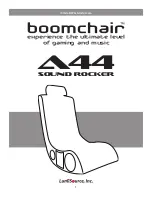
18. Ensure the cable exits the housing in the proper
place and is not pinched. If the cover does not sit
properly, remove the cover and check for obstructions.
The cover must not be forced into place.
19. Secure the cover using the original 14 silver screws
and 12 black screws removed at the beginning of the
installation. Do not forget that 2 screws go under the
carpet gripper.
20. Reinstall the pedal faces using the original screws.
On the G27 and newer, there are different length
screws. The shorter ones are for the accelerator and
the longer ones are for the brake and clutch.
Tips for Best Performance
The pedals must be calibrated every time the wheel restarts (when it does its left to right dance). The system will learn
the maximum force used to press the pedal and that will be 100% braking in game. If at any point during the game the
pedal is pressed harder than that will become the new 100%. Therefore, we recommend pressing the pedal with
maximum force after the wheel restarts so there is no variation in braking performance during a race.
The bushing is a consumable item and will break down over time. This will change the response of the pedal. You will
gradually adapt to the change and therefore it may not be apparent. Periodically inspect the bushing and replace as
needed.
Warning:
Do not stomp or beat on the brake pedal. The load cell is designed to handle several hundred pounds of force
without losing accuracy, but stomps, kicks and hammer blows can easily exceed the safe limits of the load cell. The load
cell is not warranted against failure from excessive force.
Ricmotech strongly recommends hard mounting the pedals to your sim-rig. A rigid mounting without any flex will help
you get the most out of the LC27 and give you the best improvement in your racing performance. To hard mount the
Logitech® pedals you will need 6 M6 metric bolts, their length depends the thickness of the mounting surface.
The LC27 load cell upgrade kit has been engineered to replicate the feel and reaction of a real race car brake system. To
get the most from your new load cell you should keep the following tips in mind.
Your brake will now have a soft range followed by a hard range. The soft range replicates the travel of the brake pads
before they make full contact with the brake rotors. This range will give you about 5% to 10% braking force (depending
on your final brake calibration). Use this braking range to get the weight of the car to transfer to the front wheels
without applying too much braking force.
Once the vehicle’s weight is on the front wheels you can apply more braking force without putting the car into an under
-
steer condition. At this point, the brake will feel like you are pressing on a brick and will respond to how hard you press
























